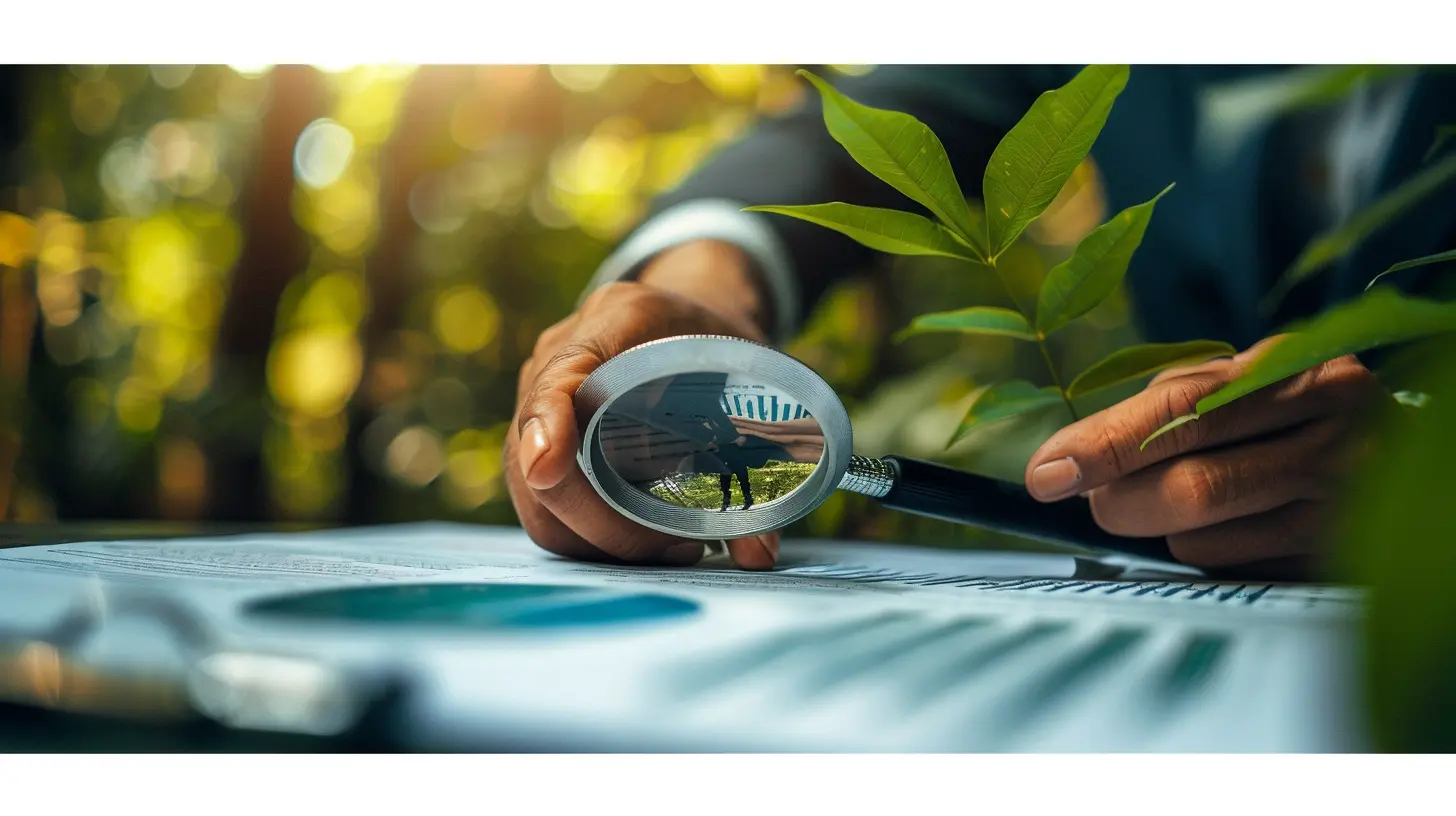The Intersection of Behavioral Economics and Market Research
13 November 2025
Picture this: You're standing in the cereal aisle, and you’ve got 47 different boxes staring at you, all screaming “Pick me!” You’ve already forgotten what you came here for. Sound familiar? Welcome to the wild world of human decision-making – the juicy playground of behavioral economics and the curious cousin of market research.
In this article, we’re diving face-first into this intersection—where quirky human behavior meets cold, hard data. It’s a place where logic gets flipped upside down, and marketers finally begin to actually understand why we’re willing to pay $5 more for the same coffee if it’s served in a fancy cup.
So grab your metaphorical magnifying glass (and maybe a snack), because we’re about to investigate how the strange, irrational choices people make are shaping smarter, sharper market research.
What Is Behavioral Economics Anyway?
Let’s start with the basics. Behavioral economics is like economics’ cooler, more fun sibling. While traditional economics assumes that people always make rational decisions (lol, as if), behavioral economics throws that idea out the window, yelling, “Have you met humans?!”Instead of assuming that we all calmly weigh pros and cons before buying socks we don’t need, behavioral economics says, “Nope! People have biases, emotions, and those lovely quirks that make them, you know, human.”
It studies how psychological, cognitive, emotional, cultural, and social factors influence economic decisions. In short, it’s the science of why you keep buying things from Instagram ads at 2 AM. You’re not alone, don’t worry.
And What’s Market Research Got To Do With It?
Market research is all about gathering info on what customers want, what they do, and what makes them tick. It’s the detective work companies do before launching a product, changing prices, or deciding whether that avocado-shaped yoga mat is worth producing.Traditionally, market research relied on surveys, focus groups, and licking a finger to test which way the wind is blowing. Okay, maybe not the last one—but it did assume that people know exactly why they make decisions and will tell the truth about them. Spoiler alert: They usually don’t.
This is where behavioral economics crashes the party, cocktail in hand, shouting, “Hold my beer—I’ve got some insights that’ll blow your KPIs off the charts.”
Why These Two Together Are a Match Made in Marketing Heaven
Behavioral economics and market research are like peanut butter and jelly or Batman and Robin. Each is okay on its own, but together? Unstoppable. Behavioral economics fills in the gaps that traditional market research misses.Imagine you’re asking a focus group, “Why do you prefer Brand A over Brand B?” They might say, “Oh, Brand A has better quality.” But behavioral economics makes us look deeper. Maybe it’s not the quality at all. Maybe Brand A’s packaging is blue, and blue subconsciously makes people feel calm and happy. Boom. Mind blown.
When you blend behavioral economics with market research, you stop asking “What did people do?” and start asking “Why the heck did they do it?”
The Irrational Side of the Consumer Brain (AKA – All of It)
Let’s admit it: most of your purchasing decisions aren’t made with spreadsheets and calculators. You buy stuff because it feels right, looks pretty, or because Karen from accounting posted about it.Behavioral economics helps market researchers make sense of all this silliness. Here are a few (hilariously real) behavioral biases that wreak havoc on otherwise logical decisions:
1. Anchoring Bias
Did you ever see a $299 pair of sneakers marked down to $149 and think, “Whew, what a steal!” That’s anchoring bias. Your brain gets stuck on the first number it sees and uses that as a baseline—even if $149 is still wildly overpriced for sneakers. But hey, they’re limited edition, right?2. Choice Overload
Back to the cereal aisle—remember that paralysis when you saw 47 options? That’s choice overload. Too many choices makes people freeze. Behavioral economics gives market researchers permission to cut the clutter and drive people toward simpler, more confident decisions.3. Loss Aversion
People hate losing things more than they enjoy gaining them. That’s why messages like “Don’t miss out!” perform better than “Act now to gain!” We’re biologically hardwired to fear loss. So, next time your promo says, “Only 3 left in stock,” thank the behavioral economists.4. Social Proof
You know those “Best Seller” tags online? Or reviews with 1,942 five-star ratings? That’s social proof. If everyone else loves it, it must be good, right? Market researchers are now baking this into product design and messaging like it’s the secret sauce. Because it kinda is.Real-World Examples: Where Psychology Meets Products
Let’s get out of theory land for a second and hop into some real-life applications that blend behavioral economics and market research like a perfect smoothie.1. Netflix and the Art of Decision Nudging
Ever notice how Netflix auto-plays previews for you? That’s not a random feature—it’s a nudge. Behavioral economists call this a form of “default bias” nudging. You’re more likely to watch what starts playing because your brain goes, “Oh cool, less work!” Market researchers figured out which thumbnails and shows people hover over. Netflix then uses that data to customize the entire experience. That "Top Picks For You"? Yeah, that’s behavioral economics in action, buddy.2. Starbucks and the Pricing Ploy
Why is the medium coffee only 20 cents cheaper than the large? That’s decoy pricing at play. They’re nudging you toward buying the large by making it look like a no-brainer. Market researchers test customer response to these pricing arrangements (and you keep buying those Grandes).3. IKEA and the Endowment Effect
This one’s wild. There’s a phenomenon called the “IKEA Effect,” where people like products more when they’ve had to assemble them themselves. Who knew Allen wrenches and mild rage built such strong emotional bonds? Market research around customer satisfaction revealed people literally feel more ownership of what they spend time constructing. Cue the rise of DIY everything.How Behavioral Insights Supercharge Market Research Tools
Modern market research is leveling up with behavioral economics baked in. Let’s break it down:✍️ Surveys Get Smarter
No more boring scales of 1 to 10. Now, questions are designed using behavioral cues. For example, rather than asking, “Would you likely purchase this?” researchers reframe it to “Which of these would you choose in a real-life situation?” Subtle? Yes. Effective? Also yes.🧠 Neuromarketing Is Real (And Kinda Sci-Fi)
Companies are literally measuring brain activity and eye movement to see what grabs attention. That’s right—we’re using science to figure out why people keep clicking on cats in hats.🎲 A/B Testing With a Behavioral Twist
You know those endless experiments where websites change one button from blue to green? Those now include behavioral variables, like urgency, scarcity, and social proof. It’s not just about what looks prettier—it’s about what triggers action.So What’s the Big Deal Anyway?
If you’re in business, marketing, UX design, product development—or even just a curious human—understanding how behavioral economics intersects with market research can change the game.It helps brands:
- Craft messaging that speaks to real human fears and desires.
- Design products and pricing that align with how people actually think.
- Lower cart abandonment with smarter nudges.
- Turn casual scrollers into loyal customers.
Think of it as being handed a behavioral cheat sheet. Suddenly, you’re not guessing what people want—you’re predicting it like some kind of marketing wizard.
But With Great Power Comes Great Responsibility…
Here’s the thing: Knowing how to influence people is powerful. But marketers have to use this knowledge ethically. Nudging someone toward a better deal? Awesome. Tricking them into buying junk? Not so much.Behavioral economics isn't about manipulation—it’s about alignment. Helping people make decisions they already want to make, just more easily.
So be the friendly neighborhood marketer, not the pushy used car salesperson from a bad '80s movie.
Wrapping It Up Like a Breakfast Burrito
Behavioral economics helps us peel back the onion layers on human behavior. It shows us that people aren’t data points—they’re charming, irrational, complex beings who want to feel understood and seen. (And also want fast shipping, let’s be real.)When you combine that emotional intelligence with the number-crunching power of market research, you get a strategy that doesn’t just track behavior—it understands it.
And in a world where attention spans are shorter than a TikTok video, that understanding is priceless.
So next time you launch a campaign, design a product, or just try to figure out why Muffin Mondays aren’t working, remember this: The human brain might be weird, but with the right tools, you can learn how to work with it—not against it.
And that, my friend, is where the magic happens.
all images in this post were generated using AI tools
Category:
Market ResearchAuthor:

Matthew Scott
Discussion
rate this article
1 comments
Peter McVey
This article aptly highlights how behavioral economics enriches market research, revealing consumer motivations that traditional methods often overlook, ultimately leading to more effective strategies and insights.
November 13, 2025 at 4:47 AM


